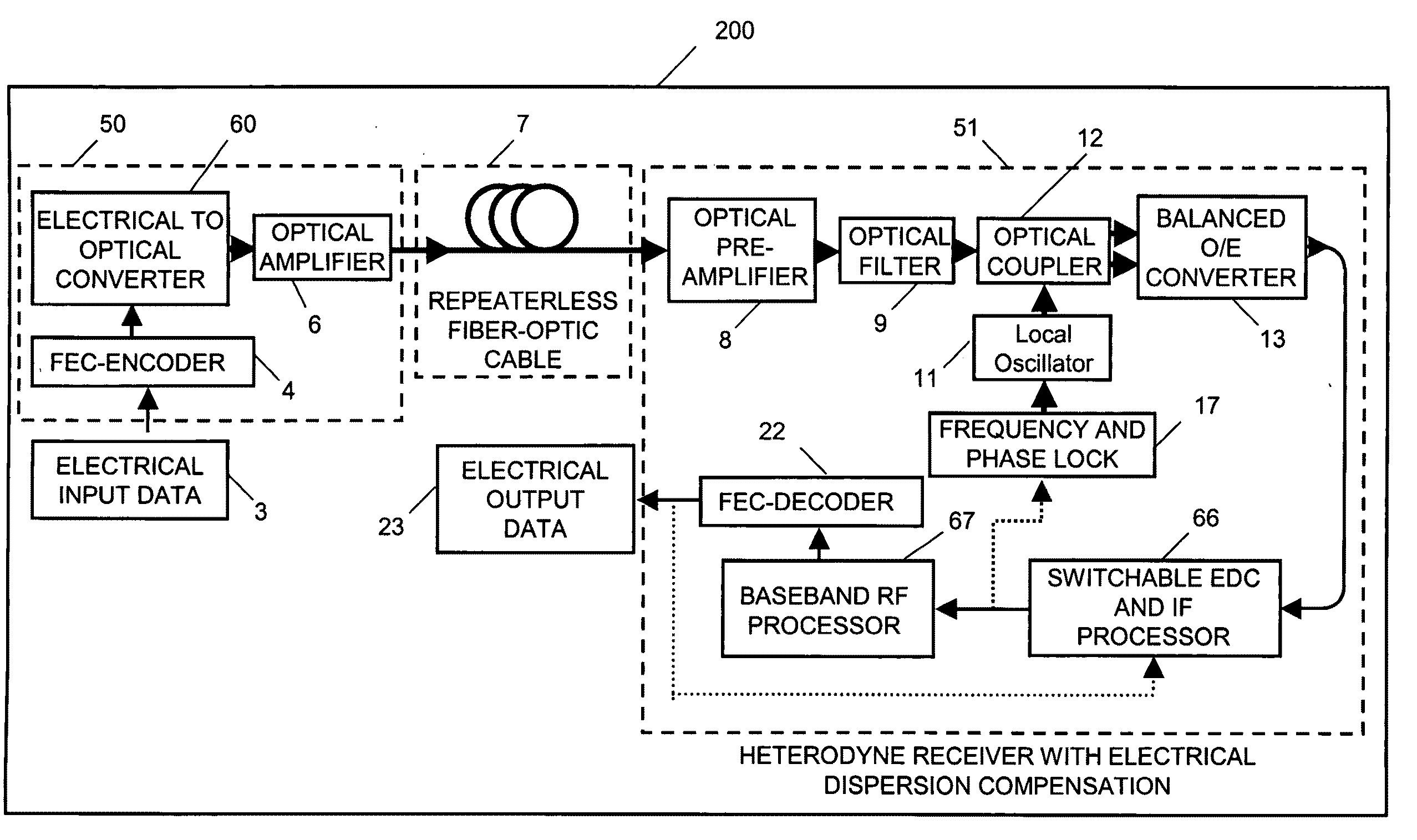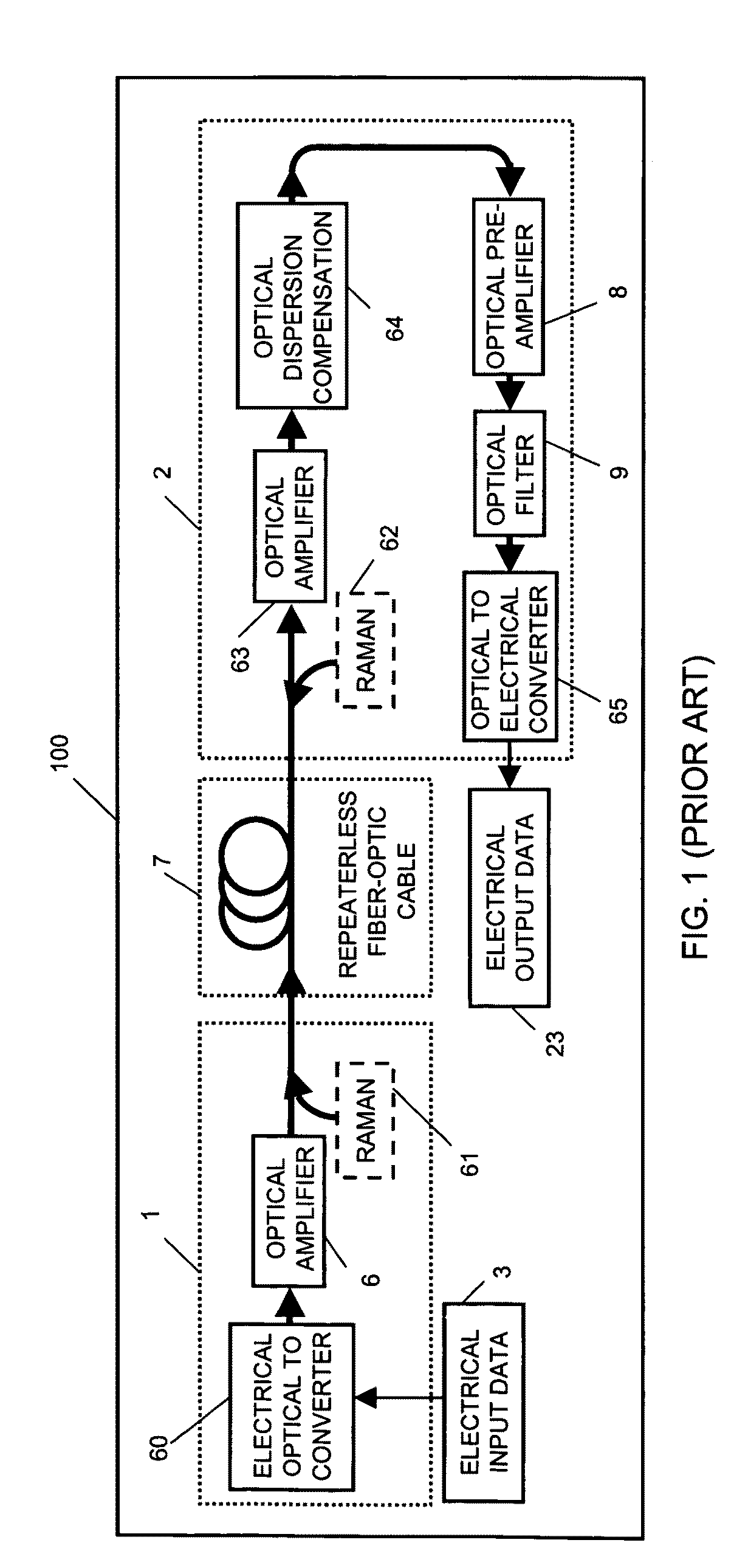Method and apparatus for repeaterless high-speed optical transmission over single-mode fiber using coherent receiver and electronic dispersion compensation
a repeaterless, optical transmission technology, applied in the field of repeaterless optical transmission over single-mode fiber, can solve the problems of fiber loss, fiber nonlinearity, chromatic dispersion (cd), etc., and achieve linear microwave dispersion compensation, eliminate additional link loss, and high sensitivity
- Summary
- Abstract
- Description
- Claims
- Application Information
AI Technical Summary
Benefits of technology
Problems solved by technology
Method used
Image
Examples
Embodiment Construction
[0016]A known repeaterless optical transmission system is shown in the block schematic diagram of FIG. 1. As shown, the prior system 100 provides an optical transmitter 1 including an electrical-to-optical converter 60 for converting an electrical input data 3 into an optical signal, which in turn is fed to a lumped optical amplifier 6. Optionally, a distributed Raman amplification process 61 is used after the lumped optical amplifier 6 before the optical signal is inputted into one end of a repeaterless fiber-optic cable or span 7. An optical receiver 2 receives the optical signal from the output, or other end of the repeaterless fiber-optic span 7. Receiver 2 optionally feeds the optical signal to a distributed Raman amplification process 62, the output of which is connected to an optical amplifier 63 to compensate for the loss of the repeaterless fiber-optic cable or fiber-optic span 7. If the Raman application process is not used, the optical signal is connected directly to the ...
PUM
 Login to View More
Login to View More Abstract
Description
Claims
Application Information
 Login to View More
Login to View More - R&D
- Intellectual Property
- Life Sciences
- Materials
- Tech Scout
- Unparalleled Data Quality
- Higher Quality Content
- 60% Fewer Hallucinations
Browse by: Latest US Patents, China's latest patents, Technical Efficacy Thesaurus, Application Domain, Technology Topic, Popular Technical Reports.
© 2025 PatSnap. All rights reserved.Legal|Privacy policy|Modern Slavery Act Transparency Statement|Sitemap|About US| Contact US: help@patsnap.com



